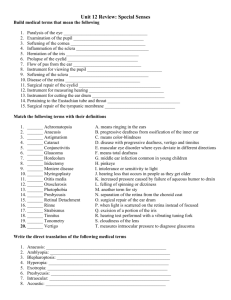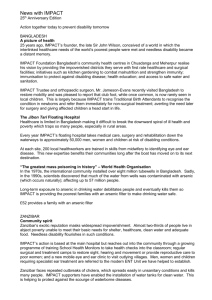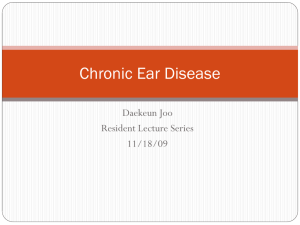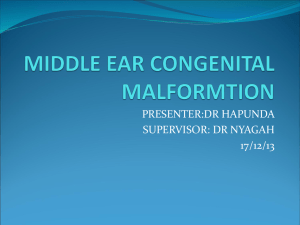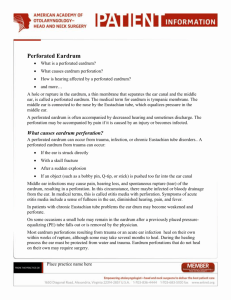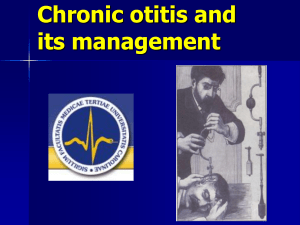Benefits and Risks of Tonsillectomy
advertisement
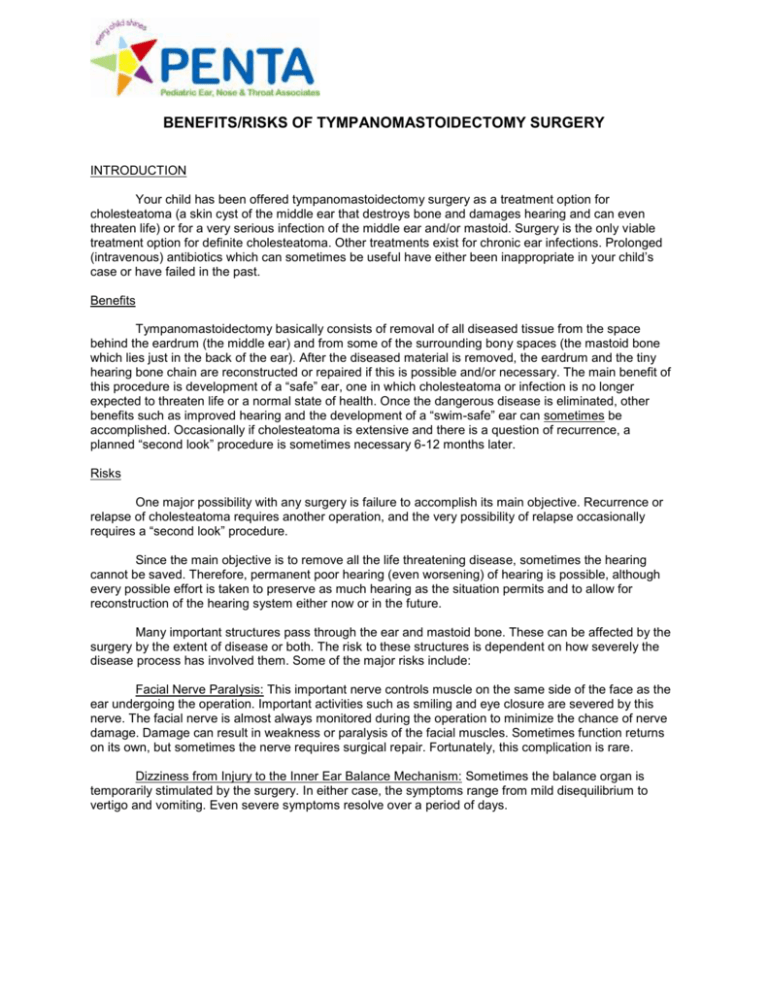
BENEFITS/RISKS OF TYMPANOMASTOIDECTOMY SURGERY INTRODUCTION Your child has been offered tympanomastoidectomy surgery as a treatment option for cholesteatoma (a skin cyst of the middle ear that destroys bone and damages hearing and can even threaten life) or for a very serious infection of the middle ear and/or mastoid. Surgery is the only viable treatment option for definite cholesteatoma. Other treatments exist for chronic ear infections. Prolonged (intravenous) antibiotics which can sometimes be useful have either been inappropriate in your child’s case or have failed in the past. Benefits Tympanomastoidectomy basically consists of removal of all diseased tissue from the space behind the eardrum (the middle ear) and from some of the surrounding bony spaces (the mastoid bone which lies just in the back of the ear). After the diseased material is removed, the eardrum and the tiny hearing bone chain are reconstructed or repaired if this is possible and/or necessary. The main benefit of this procedure is development of a “safe” ear, one in which cholesteatoma or infection is no longer expected to threaten life or a normal state of health. Once the dangerous disease is eliminated, other benefits such as improved hearing and the development of a “swim-safe” ear can sometimes be accomplished. Occasionally if cholesteatoma is extensive and there is a question of recurrence, a planned “second look” procedure is sometimes necessary 6-12 months later. Risks One major possibility with any surgery is failure to accomplish its main objective. Recurrence or relapse of cholesteatoma requires another operation, and the very possibility of relapse occasionally requires a “second look” procedure. Since the main objective is to remove all the life threatening disease, sometimes the hearing cannot be saved. Therefore, permanent poor hearing (even worsening) of hearing is possible, although every possible effort is taken to preserve as much hearing as the situation permits and to allow for reconstruction of the hearing system either now or in the future. Many important structures pass through the ear and mastoid bone. These can be affected by the surgery by the extent of disease or both. The risk to these structures is dependent on how severely the disease process has involved them. Some of the major risks include: Facial Nerve Paralysis: This important nerve controls muscle on the same side of the face as the ear undergoing the operation. Important activities such as smiling and eye closure are severed by this nerve. The facial nerve is almost always monitored during the operation to minimize the chance of nerve damage. Damage can result in weakness or paralysis of the facial muscles. Sometimes function returns on its own, but sometimes the nerve requires surgical repair. Fortunately, this complication is rare. Dizziness from Injury to the Inner Ear Balance Mechanism: Sometimes the balance organ is temporarily stimulated by the surgery. In either case, the symptoms range from mild disequilibrium to vertigo and vomiting. Even severe symptoms resolve over a period of days. Alterations in taste Ear ringing (tinnitus) Complete hearing loss Leakage of brain fluid – the roof of the ear sits against the base of the brain Bleeding or infection in the wound Tympanomastoidectomy surgery in considered major ear surgery, but every precaution is undertaken to perform it safely and uneventfully. Most of the risks delineated above are very rare, and the vast majority of children recover safely and satisfactorily. It is necessary for us to help you understand the risks and benefits as fully as possible. The complications listed here are not totally inclusive but include the most common and/or serious ones. _________________________________ SURGEON ___________________________________ PATIENT __________________________________ WITNESS ____________________________________ DATE SHARED/pre-post instructionsTYMPANOMASTOIDECTOMY 2/13/14



